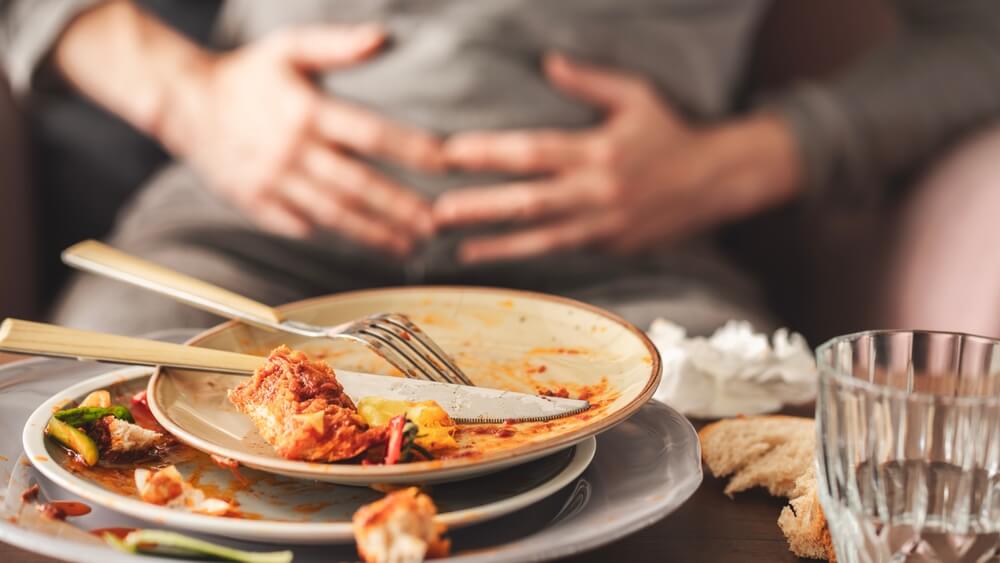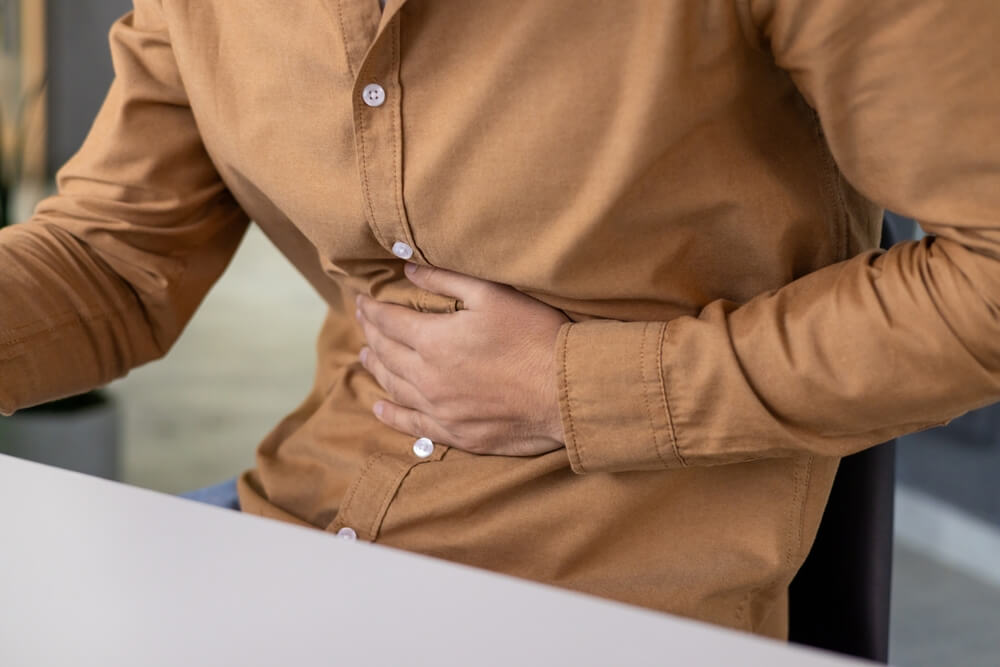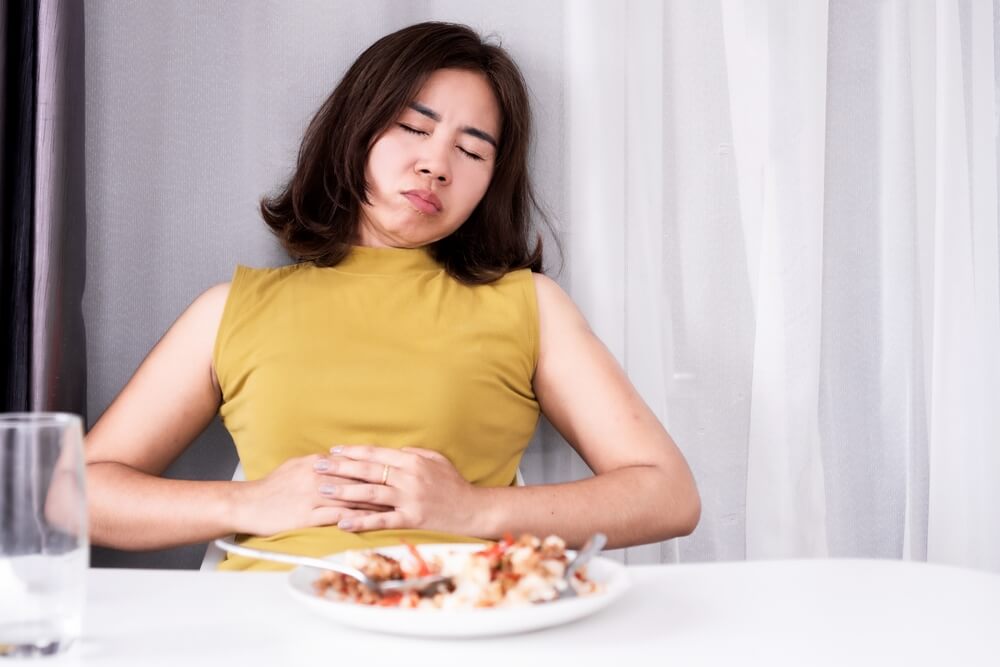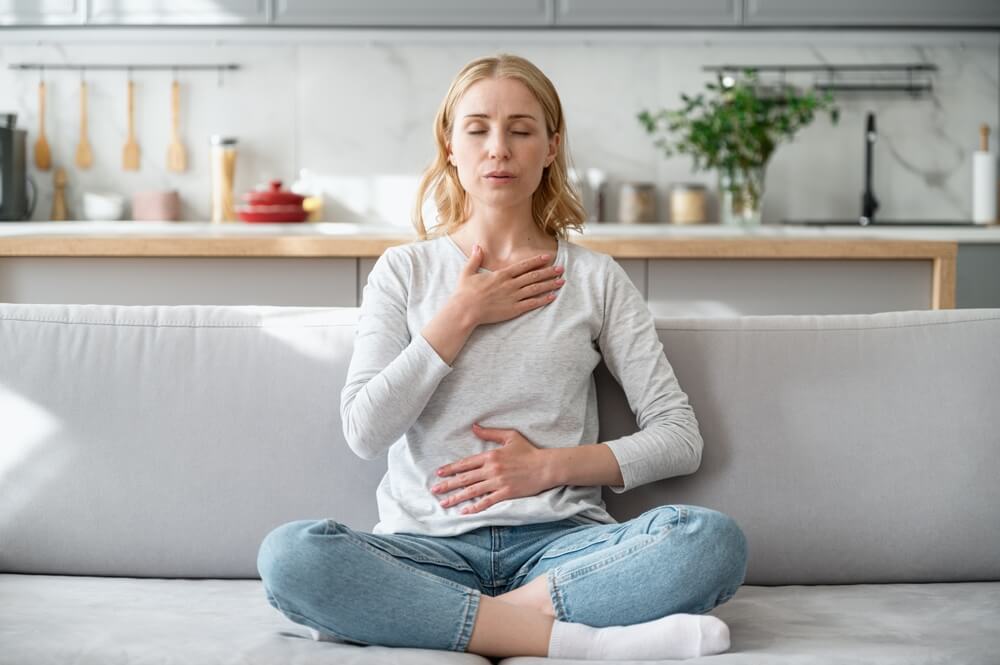Stomach Pain After Eating: Common Causes & What to Do


Uncomfortable stomach ache after meals is something almost everyone has felt at one time or another. Sometimes it’s mild and short-lived, and other times it can feel sharp, burning, or cramp-like, leaving you wondering “why does my stomach hurt after eating certain foods?” or “why does my stomach hurt every time I eat?”
Here at Endocare Diagnostics, we often see patients who describe this same distressing pattern: discomfort or pain that follows eating and sometimes lingers for hours. The reassuring news is that in most cases, this symptom can be explained and managed once the underlying cause is understood.
In this blog, we’ll look at what stomach pain after eating really feels like, explore the most common reasons behind it, and explain when it’s important to seek help from our gut specialists.
What Does Stomach Pain After Eating Feel Like?
Post-meal pain can present in several ways. Some people feel a dull ache or heaviness, while others describe sharp cramps, burning under the ribs, or a tight pressure that builds over time.
You may notice discomfort soon after eating, or pain that appears one hour after eating, once digestion is in full swing. Sometimes the pain is accompanied by bloating, trapped gas, or nausea. Understanding exactly what the pain feels like (and where it’s located) can provide valuable clues about what’s going on.

Most Common Causes of Stomach Pain After Eating
Eating too quickly or overeating:
Eating large portions or eating too fast can overload your digestive system. When you swallow too much air or stretch the stomach lining, you can develop cramping and stomach pain after eating, especially if the meal is heavy or rich.
Gas and bloating pressure:
Trapped wind is one of the simplest explanations for stomach pain and bloating after eating. Gas naturally forms as your gut breaks down food, and when it doesn’t pass easily, pressure can build up. This can lead to discomfort or a tight, swollen feeling.
Food intolerances (lactose, gluten, FODMAPs):
If you experience stomach pain after eating dairy or stomach pain after eating greasy food, it could point to an intolerance. The gut may struggle to digest certain sugars or proteins, leading to gas, cramps, or loose stools. Some of the most common triggers include lactose, gluten, and high-FODMAP foods like onions, beans, and wheat.
Spicy or fatty foods:
Spices and high-fat meals can irritate the stomach lining and delay emptying, causing fullness, burning, or even pain under the ribs after eating. You may notice this especially after eating takeaways or rich, fried foods.
Acid reflux or heartburn:
If you feel discomfort in the upper stomach or chest after eating, acid reflux might be the cause. Stomach acid can travel up towards the oesophagus, creating a burning sensation known as heartburn. This can often worsen when lying down soon after eating.
Indigestion (dyspepsia):
Indigestion can cause stomach pain one hour after eating, along with bloating, belching and nausea. It’s usually linked to the way food moves through your stomach, or to irritation of the stomach lining from certain foods, alcohol, or medications.

Digestive Conditions That Cause Post-Meal Pain
While everyday factors are common, if you’re experiencing persistent pain, it could be linked to an underlying digestive condition, like:
Irritable Bowel Syndrome (IBS):
IBS is a functional gut disorder that can cause cramping, bloating, and alternating diarrhoea or constipation. Many people with IBS report stomach pain after eating certain foods or during periods of stress.
Gastritis or stomach inflammation:
Gastritis occurs when the stomach lining becomes inflamed, it’s often due to infection (like H.pylori), excess alcohol, or long-term use of painkillers. It may cause burning or aching discomfort shortly after eating.
Gallbladder issues:
The gallbladder releases bile to help digest fats. When gallstones block the bile duct, it can cause pain under the right ribs after eating, especially after fatty meals. This pain can spread to the shoulder or back and can last from minutes to hours.
Pancreatic issues:
Inflammation of the pancreas (pancreatitis) can cause severe pain in the upper abdomen or radiating to the back. This pain can often worsen after eating, as the pancreas becomes active in digesting food.
Ulcers:
Stomach or duodenal ulcers (sores in the stomach or upper small intestine) can lead to gnawing or burning pain after meals. In some cases, eating relieves the pain, but it returns a few hours later.

When Should I Worry About Stomach Pain After Eating?
Although occasional discomfort is normal, there are certain warning signs that mean it’s time to seek medical advice:
- Sudden or severe abdominal pain
- Pain that lasts for several hours
- Pain with vomiting, diarrhoea, fever, or weight loss
- Blood in your stool or vomit
- Ongoing pain after every meal
If you’re experiencing any of these symptoms, don’t ignore them. Stomach pain is your body’s way of signalling that something isn’t right - and early assessment can prevent more serious problems from developing.

How to Reduce Stomach Pain at Home
Eat smaller, slower meals:
Give your digestive system time to work efficiently by eating slowly and avoiding large portions.
Keep a food diary to spot triggers:
Recording what you eat and when symptoms occur can help identify patterns. For example, if stomach pain after eating greasy food or dairy happens repeatedly.
Avoid trigger foods:
Common culprits include spicy dishes, caffeine, alcohol, and processed foods. Reducing these can ease indigestion and reflux.
Manage stress and anxiety:
Stress can affect the way your gut moves and digests food. With gentle exercise, deep breathing, and mindfulness techniques, you can support both your digestion and overall wellbeing.

When to See a Specialist or Get Tested
If your pain keeps returning, interferes with daily life, or you find yourself avoiding food out of fear of discomfort, it’s time to seek expert help.
Here at Endocare Diagnostics, our specialist team can carry out a range of tests to identify the cause of post-meal pain, from food intolerance and breath testing to blood tests, ultrasound, and gastroscopy.
As Bupa-approved private diagnostic care, we offer fast access to investigations without any long waiting lists to help you find answers sooner. With a clear diagnosis, we can create a personalised plan to manage symptoms and restore comfort.
If stomach pain after eating is happening often or getting worse, our specialist diagnostic team can help identify what’s causing it – reach out to us today.
Frequently Asked Questions
Is it normal to get stomach pain after eating?
Occasional stomach ache after meals can happen to anyone, especially after eating too much or too quickly. However, if you experience pain every time you eat, or it’s getting worse, you should seek some medical advice. Persistent pain isn’t considered normal and may need investigation.
Can food intolerances cause stomach pain?
Yes. Food intolerances like lactose or gluten sensitivity are among the most common causes of stomach pain and bloating after eating. Identifying and avoiding trigger foods can make a huge difference, and the diagnostic team can confirm what’s behind your symptoms.
When should I see a doctor about stomach pain after eating?
If your pain is severe, lasts more than a few days, or is accompanied by weight loss, vomiting, or blood in your stool, it’s vital you see a healthcare professional. Even mild but frequent pain deserves attention to rule out digestive issues like gastritis, gallstones, or IBS.
Could it be IBS or something more serious?
It could be IBS, but persistent or severe pain may also indicate another digestive condition. Here at Endocare Diagnostics, we specialise in identifying the root cause of your stomach ache, giving you the clarity and personalised care you need to start feeling better.















